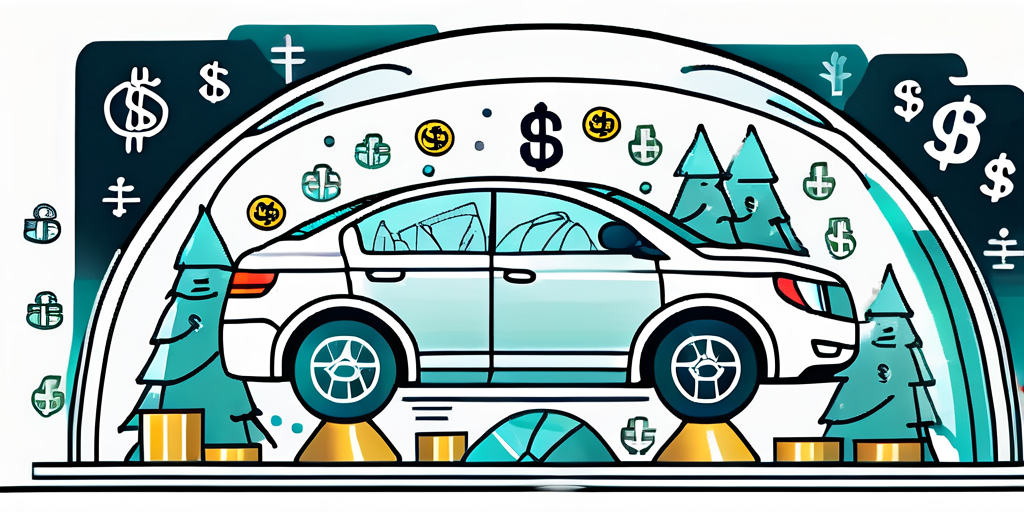Understanding the Meaning of Auto Refinance
Auto refinance is a term that is often thrown around when discussing car loans and financing options. It refers to the process of replacing your existing auto loan with a new one, typically with better terms and conditions. This can be done to lower your interest rates, reduce your monthly payments, or even shorten the duration of your loan. In this article, we will delve deeper into the meaning of auto refinance and explore its benefits and potential drawbacks. We will also provide you with valuable information on the process of auto refinancing and help you decide if it is the right choice for you.
Defining Auto Refinance
Before we delve into the intricacies of auto refinance, let’s first define what it means. Essentially, auto refinance involves obtaining a new loan to pay off your existing auto loan. This new loan comes with different terms and conditions, allowing you to potentially save money in the long run. By refinancing your auto loan, you can secure more favorable interest rates or negotiate improved payment terms.
Auto refinance is a financial strategy that can provide significant benefits to borrowers. It allows individuals to take advantage of changes in the financial market, such as lower interest rates, to reduce their monthly payments and overall loan costs. It is a popular option for those who want to save money or improve their financial situation.
The Basics of Auto Refinance
It is important to understand the basics of auto refinance before deciding whether it is the right choice for you. When you refinance your auto loan, you essentially take out a new loan to replace your existing one. This new loan pays off the remaining balance on your original loan, and you are then left with the new terms and conditions of the refinanced loan.
When considering auto refinance, it’s crucial to assess your current financial situation and goals. Take into account factors such as your credit score, income stability, and the value of your vehicle. These factors can influence the terms and conditions you may be eligible for when refinancing.
One of the primary reasons individuals choose to refinance their auto loans is to take advantage of lower interest rates. If you initially secured your auto loan when interest rates were high, refinancing can help you secure a lower rate, potentially saving you thousands of dollars over the life of your loan. Lower interest rates can also lead to reduced monthly payments, freeing up more of your income for other financial goals.
Another benefit of auto refinance is the ability to negotiate improved payment terms. If your financial situation has changed since you first obtained your auto loan, refinancing can provide an opportunity to adjust your repayment schedule. You may be able to extend the term of your loan, resulting in lower monthly payments. Alternatively, you can choose to shorten the term, allowing you to pay off the loan faster and save on interest charges.
Key Terms in Auto Refinance
Before diving into the process of auto refinancing, it is important to familiarize yourself with some key terms that you will come across:
- Principal: The original amount financed, or the remaining balance on your current loan.
- Interest Rate: The percentage at which interest is charged on your loan.
- Term: The length of time in which you must repay your loan.
- Lender: The financial institution or company providing the loan.
- APR (Annual Percentage Rate): The annualized cost of borrowing, including interest and other fees.
- Monthly Payment: The amount you must pay each month to repay your loan.
Understanding these key terms is essential for navigating the auto refinance process. They will help you comprehend the various aspects of your loan and make informed decisions when comparing different refinancing options.
Principal refers to the original amount financed or the remaining balance on your current loan. It is the initial sum of money you borrowed to purchase your vehicle. When refinancing, the principal will be paid off using the new loan.
The interest rate is the percentage at which interest is charged on your loan. It determines the cost of borrowing and affects the total amount you will repay over the life of the loan. A lower interest rate can result in significant savings.
The term of the loan refers to the length of time in which you must repay it. It is typically measured in months or years. The term can impact your monthly payments and the total interest paid. Choosing the right term is crucial to align your loan with your financial goals.
The lender is the financial institution or company providing the loan. It is important to research and compare different lenders to find the one that offers the most favorable terms and conditions for your auto refinance.
APR, or Annual Percentage Rate, represents the annualized cost of borrowing, including interest and other fees. It provides a comprehensive view of the total cost of the loan and allows for easier comparison between different loan offers.
Lastly, the monthly payment is the amount you must pay each month to repay your loan. It includes both the principal and interest, as well as any other fees or charges. Understanding your monthly payment is essential for budgeting and ensuring you can comfortably afford your refinanced loan.
The Process of Auto Refinancing
Once you have a solid understanding of auto refinance and its key terms, it’s time to delve into the process itself. The steps below outline the typical process involved in auto refinancing.

Preparing for Auto Refinance
Before you start the refinancing process, it’s crucial to gather all the necessary documents and information. This includes your current loan documents, your credit history, and any other relevant financial information. It’s also important to check your credit score, as this will play a significant role in the refinancing process.
Steps in Auto Refinancing
The exact steps involved in auto refinancing may vary depending on the lender and your individual circumstances. However, the following steps generally apply:
- Research and Compare Lenders: Start by researching different lenders and comparing their rates, terms, and fees. Look for reputable lenders that specialize in auto refinance.
- Gather Required Documents: Gather all the necessary documents, such as your proof of income, identification, and current loan information.
- Submit an Application: Once you’ve chosen a lender, submit your application for auto refinancing. This may be done online, by phone, or in person.
- Provide Additional Information: The lender may request additional information or documentation during the evaluation process. It’s important to provide any requested information promptly to expedite the process.
- Loan Approval: If your application is approved, the lender will provide you with loan terms and conditions. Review them carefully to ensure you fully understand the new loan agreement.
- Loan Closing: Once you have accepted the loan terms, arrange for the closing of your loan. This typically involves signing the necessary documents and paying any closing costs.
- Pay Off Your Original Loan: The new loan funds will be disbursed, and the lender will use them to pay off your existing auto loan. Make sure to continue making payments on your original loan until it is fully paid off.
Benefits of Auto Refinancing
Auto refinancing offers several benefits that can help you save money and improve your financial situation. Let’s explore a few of these benefits below.
Lower Interest Rates
One of the primary benefits of auto refinancing is the potential for lower interest rates. If you initially obtained your auto loan when interest rates were high, refinancing can provide an opportunity to secure a lower rate. This can result in significant savings over the life of your loan.
Reduced Monthly Payments
Refinancing your auto loan can also lead to reduced monthly payments. By securing a lower interest rate or extending the loan term, you can lower the amount you need to pay each month, freeing up extra money in your budget.
Potential Drawbacks of Auto Refinancing
While auto refinancing can offer numerous benefits, it’s important to consider potential drawbacks before making a decision.

Possible Extra Costs
Refinancing your auto loan may involve certain fees and costs, such as application fees, appraisal fees, or prepayment penalties. It’s important to carefully review the terms and conditions of the new loan to determine if these costs outweigh the potential benefits.
Impact on Credit Score
Applying for a new loan, including auto refinance, will result in a hard inquiry on your credit report. This can have a temporary negative impact on your credit score. However, if you make timely payments on your new loan, it can ultimately have a positive long-term effect on your creditworthiness.
Deciding if Auto Refinancing is Right for You
Now that you understand the meaning of auto refinance and have insight into its benefits and drawbacks let’s discuss how to determine if it’s the right choice for you.

Factors to Consider
Several factors come into play when deciding if auto refinance is the right option for you:
- Current Interest Rates: Compare current interest rates with the rate on your existing loan to gauge if refinancing will provide a significant advantage.
- Loan Age: Consider the age of your current loan. Refinancing may be more beneficial if you are in the earlier stages of your loan term.
- Loan Balance: Evaluate the remaining principal balance on your loan. If you’ve paid off a significant portion, refinancing may not be as advantageous.
- Financial Situation: Assess your overall financial situation, including your credit score, income stability, and debt-to-income ratio.
When to Refinance Your Auto Loan
Timing plays a crucial role when it comes to auto refinancing. Here are a few situations in which refinancing may be a smart move:
- Interest Rates have Dropped: If interest rates have significantly dropped since you secured your original loan, it may be an opportune time to refinance.
- Improved Credit Score: If your credit score has improved since you obtained your current loan, you may be eligible for better loan terms and conditions.
- Change in Financial Situation: If your financial situation has improved, such as increased income or reduced debt, refinancing can help you secure better loan terms.
Auto refinancing can be a valuable tool to help you save money and improve your financial situation. By understanding the meaning of auto refinance, the refinancing process, and the benefits and drawbacks, you are better equipped to make an informed decision. Consider your current loan terms, interest rates, and overall financial situation and let BestAutoRefinance.ai help you find the best lender through our Artifical Intelligence engine. Get a Free Quote Now
